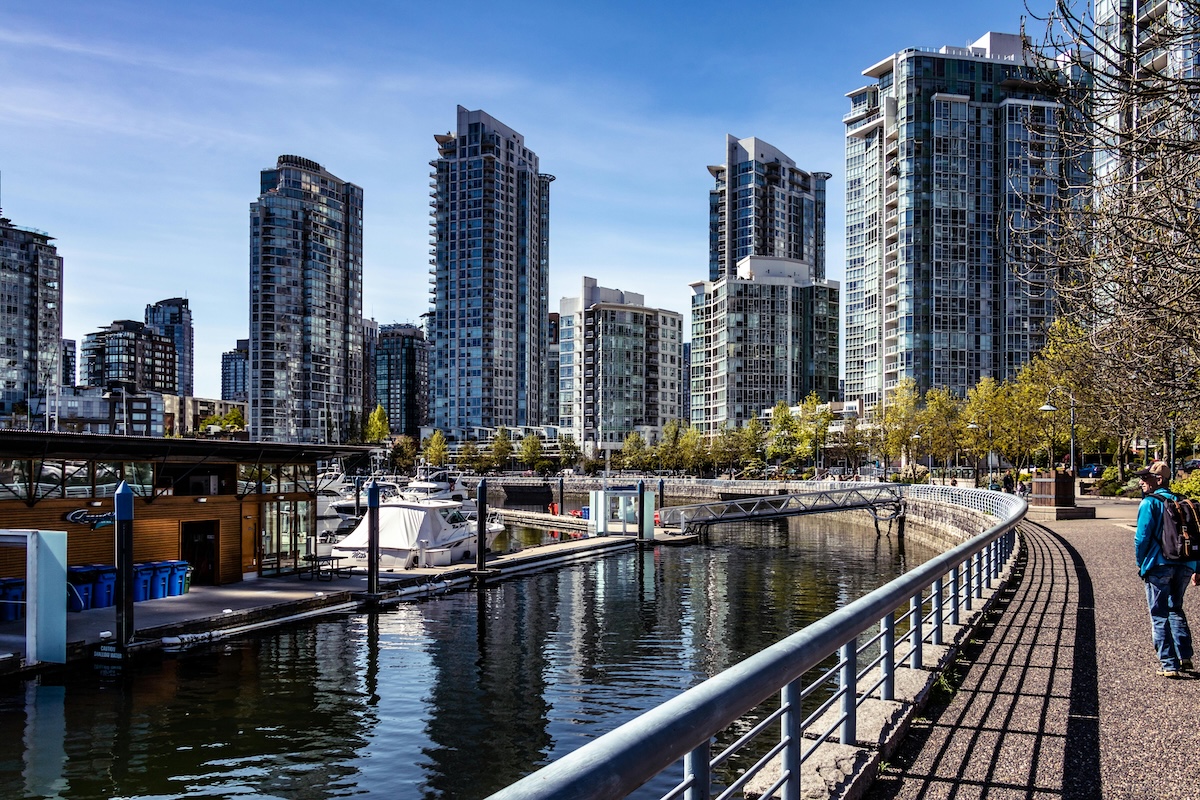Rennie Landscape Spring 2025

Overview
Metro Vancouver enters spring 2025 at an inflection point. Hiring momentum has faded, but borrowing costs are falling fast; population inflows are being pared back just as a record wave of housing completions hits the market. The Rennie Landscape Spring 2025 report threads these narratives together, parsing what a 6.5 % national jobless rate, a 2.75 % policy rate and the first planned population decline in Canadian history mean for buyers, sellers and investors (Rennie Landscape – Economy).
Across the region the mood is cautiously optimistic: fixed mortgages are back in the threes, rental cranes still crowd the skyline and policymakers are scrambling to square affordability with sustainability. What emerges is a nuanced picture—neither boom nor bust, but a complex hand‑off from years of stimulus‑fuelled growth to a more balanced, fundamentals‑driven cycle (Rennie Landscape – Rates).
Economy
Canada’s rolling 12‑month unemployment rate has climbed from a record low of 5.1 % in May 2023 to 6.5 % as of February 2025, even without a technical recession (Rennie Landscape – Economy). The slack is most visible in consumer‑facing sectors, and Metro Vancouver is no exception; job postings in retail and hospitality are down double digits year‑over‑year while professional services hiring holds steady.
Policy uncertainty is amplifying the chill: a newly imposed 25 % U.S. tariff on most Canadian exports coincides with an unexpected federal leadership race, pushing Canada’s policy‑uncertainty index to historic highs (Rennie Landscape – Economy). So far markets remain orderly, but a weaker loonie is eroding purchasing power for imported building materials.
Rates
With headline inflation back in the Bank of Canada’s 1‑3 % target range—just 2.6 % in February—the Bank has shifted from restraint to fine‑tuning (Rennie Landscape – Rates). Five consecutive cuts have lowered the policy rate from 5.00 % in January 2024 to 2.75 % by March 2025, settling inside the Bank’s estimated “neutral” corridor.
The drop has already pulled the average discounted five‑year fixed mortgage rate back below 4 %, and the spread to the five‑year Government of Canada bond yield sits near its long‑run mean of 119 bps (Rennie Landscape – Rates). Lenders are signalling stiff competition for the 1.7 million mortgages scheduled to renew this year, a potential tail‑wind for resale volumes.
Credit & Debt
Cheaper credit is coaxing households back to the borrow‑button: Canadians added $127 billion to their total debt in 2024—32 % more than 2023, though still 28 % below the 2021 peak (Rennie Landscape – Credit & Debt). Notably, mortgage loans accounted for “only” 70 % of the increase, the smallest share since 2009, as consumer and non‑mortgage balances picked up.
The total debt‑service ratio eased for a fourth straight quarter to 14.4 % of disposable income, down from the record 15.1 % a year earlier, while mortgage arrears remain a historically tiny 0.22 % (Rennie Landscape – Credit & Debt). Rising wages—average weekly earnings rose 5.7 % last year—are cushioning upcoming payment shocks as borrowers roll into higher rates.
Demographics
Population growth has already decelerated: after back‑to‑back gains of 970 k in 2022 and 1.3 million in 2023, Canada added 744 k residents in 2024 (Rennie Landscape – Demographics). Most of the surge came from non‑permanent residents, whose numbers have soared 123 % to 3.02 million since late 2021.
Ottawa now plans an unprecedented net outflow of 445 k non‑permanent residents in both 2025 and 2026 to push their share of population back to 5 % (Rennie Landscape – Policy). Combined with lower permanent‑resident targets, the policy implies two consecutive years of national—and likely Metro Vancouver—population decline, shifting rental demand and labour‑force forecasts.
Housing
Builders front‑loaded supply before the slowdown: Metro Vancouver kicked off a record 33,000 homes in 2023 and a still‑robust 28,000 in 2024, with purpose‑built rentals topping 10,000 starts in each year (Rennie Landscape – Housing). Last year’s rental output was 59 % above the past‑decade average even as ownership starts fell 21 % below trend.
That investment is beginning to show: the region’s purpose‑built rental stock has expanded 8 % over three years and nudged the vacancy rate to its highest level since 2013 (excluding 2020) (Rennie Landscape – Housing). Yet with presale condominium sales slipping below 10,000 in 2024, overall housing starts are expected to edge lower in 2025.
Policy
The federal Immigration Levels Plan unveiled in November swings from acceleration to brake, targeting a loss of 445,000 temporary residents in both 2025 and 2026 and trimming permanent‑resident admissions to 395 k next year (Rennie Landscape – Policy). Ottawa projects the first annual population decline on record—an 85 k drop in each of the next two years.
Regulators are also loosening the screws on credit: uninsured borrowers can now switch lenders at renewal without a fresh stress test, mortgage‑insurance eligibility has been lifted to $1.5 million, and first‑time buyers may opt for 30‑year amortizations (Rennie Landscape – Policy). Meanwhile, a proposed hike to the capital‑gains inclusion rate has been shelved until 2026 and may die on the election trail—relief for investors weighing future dispositions.
For the complete interactive analysis, see the Rennie Landscape Spring 2025 report.
This article is for informational purposes only. Statistics and market conditions are current as of the publication date and may change without notice. It is not legal or financial advice. Always verify details and consult qualified professionals before making real-estate decisions.
Overview
Metro Vancouver enters spring 2025 at an inflection point. Hiring momentum has faded, but borrowing costs are falling fast; population inflows are being pared back just as a record wave of housing completions hits the market. The Rennie Landscape Spring 2025 report threads these narratives together, parsing what a 6.5 % national jobless rate, a 2.75 % policy rate and the first planned population decline in Canadian history mean for buyers, sellers and investors (Rennie Landscape – Economy).
Across the region the mood is cautiously optimistic: fixed mortgages are back in the threes, rental cranes still crowd the skyline and policymakers are scrambling to square affordability with sustainability. What emerges is a nuanced picture—neither boom nor bust, but a complex hand‑off from years of stimulus‑fuelled growth to a more balanced, fundamentals‑driven cycle (Rennie Landscape – Rates).
Economy
Canada’s rolling 12‑month unemployment rate has climbed from a record low of 5.1 % in May 2023 to 6.5 % as of February 2025, even without a technical recession (Rennie Landscape – Economy). The slack is most visible in consumer‑facing sectors, and Metro Vancouver is no exception; job postings in retail and hospitality are down double digits year‑over‑year while professional services hiring holds steady.
Policy uncertainty is amplifying the chill: a newly imposed 25 % U.S. tariff on most Canadian exports coincides with an unexpected federal leadership race, pushing Canada’s policy‑uncertainty index to historic highs (Rennie Landscape – Economy). So far markets remain orderly, but a weaker loonie is eroding purchasing power for imported building materials.
Rates
With headline inflation back in the Bank of Canada’s 1‑3 % target range—just 2.6 % in February—the Bank has shifted from restraint to fine‑tuning (Rennie Landscape – Rates). Five consecutive cuts have lowered the policy rate from 5.00 % in January 2024 to 2.75 % by March 2025, settling inside the Bank’s estimated “neutral” corridor.
The drop has already pulled the average discounted five‑year fixed mortgage rate back below 4 %, and the spread to the five‑year Government of Canada bond yield sits near its long‑run mean of 119 bps (Rennie Landscape – Rates). Lenders are signalling stiff competition for the 1.7 million mortgages scheduled to renew this year, a potential tail‑wind for resale volumes.
Credit & Debt
Cheaper credit is coaxing households back to the borrow‑button: Canadians added $127 billion to their total debt in 2024—32 % more than 2023, though still 28 % below the 2021 peak (Rennie Landscape – Credit & Debt). Notably, mortgage loans accounted for “only” 70 % of the increase, the smallest share since 2009, as consumer and non‑mortgage balances picked up.
The total debt‑service ratio eased for a fourth straight quarter to 14.4 % of disposable income, down from the record 15.1 % a year earlier, while mortgage arrears remain a historically tiny 0.22 % (Rennie Landscape – Credit & Debt). Rising wages—average weekly earnings rose 5.7 % last year—are cushioning upcoming payment shocks as borrowers roll into higher rates.
Demographics
Population growth has already decelerated: after back‑to‑back gains of 970 k in 2022 and 1.3 million in 2023, Canada added 744 k residents in 2024 (Rennie Landscape – Demographics). Most of the surge came from non‑permanent residents, whose numbers have soared 123 % to 3.02 million since late 2021.
Ottawa now plans an unprecedented net outflow of 445 k non‑permanent residents in both 2025 and 2026 to push their share of population back to 5 % (Rennie Landscape – Policy). Combined with lower permanent‑resident targets, the policy implies two consecutive years of national—and likely Metro Vancouver—population decline, shifting rental demand and labour‑force forecasts.
Housing
Builders front‑loaded supply before the slowdown: Metro Vancouver kicked off a record 33,000 homes in 2023 and a still‑robust 28,000 in 2024, with purpose‑built rentals topping 10,000 starts in each year (Rennie Landscape – Housing). Last year’s rental output was 59 % above the past‑decade average even as ownership starts fell 21 % below trend.
That investment is beginning to show: the region’s purpose‑built rental stock has expanded 8 % over three years and nudged the vacancy rate to its highest level since 2013 (excluding 2020) (Rennie Landscape – Housing). Yet with presale condominium sales slipping below 10,000 in 2024, overall housing starts are expected to edge lower in 2025.
Policy
The federal Immigration Levels Plan unveiled in November swings from acceleration to brake, targeting a loss of 445,000 temporary residents in both 2025 and 2026 and trimming permanent‑resident admissions to 395 k next year (Rennie Landscape – Policy). Ottawa projects the first annual population decline on record—an 85 k drop in each of the next two years.
Regulators are also loosening the screws on credit: uninsured borrowers can now switch lenders at renewal without a fresh stress test, mortgage‑insurance eligibility has been lifted to $1.5 million, and first‑time buyers may opt for 30‑year amortizations (Rennie Landscape – Policy). Meanwhile, a proposed hike to the capital‑gains inclusion rate has been shelved until 2026 and may die on the election trail—relief for investors weighing future dispositions.
For the complete interactive analysis, see the Rennie Landscape Spring 2025 report.
This article is for informational purposes only. Statistics and market conditions are current as of the publication date and may change without notice. It is not legal or financial advice. Always verify details and consult qualified professionals before making real-estate decisions.
Monthly stats decoded so you can time your move.
Explore Related Articles
Discover insights and tips for your journey.
Ready to Make a Move?
Schedule your personalized strategy call today and unlock your real estate potential with expert guidance.




